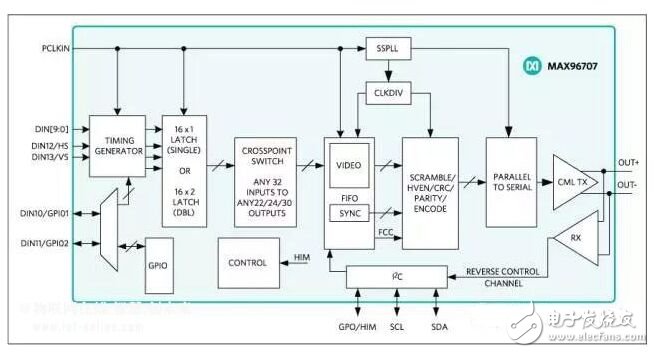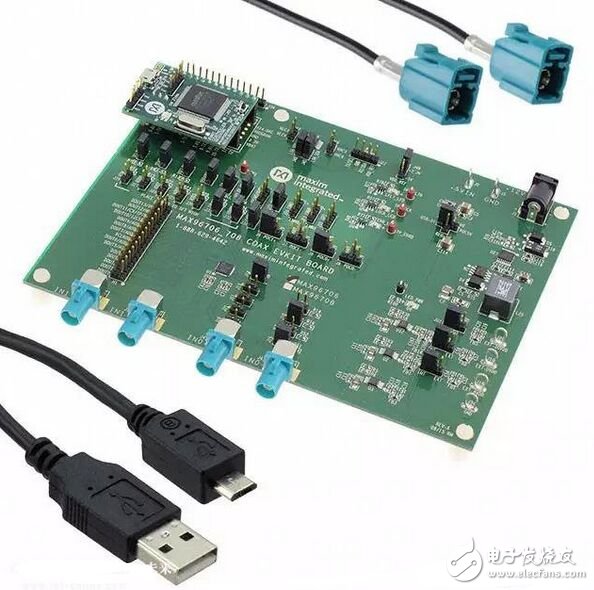The car is rapidly evolving into a secure, networked, self-driving robot that senses the environment, thinks and takes autonomous measures. Perhaps the fastest change is a small, self-driving public vehicle – a taxi, carpool or bus that takes us from a public transport station, downtown or office area to where we want to go (last mile).
An example of this is the NAVYA ARMA self-driving electric bus that was launched in October 2015. This small bus can safely carry 15 passengers at speeds of up to 28 miles and is currently being tested or operated in many communities in Europe and the United States and appeared on the streets of Las Vegas during CES 2017.
Observe the surrounding environment
Whether it is a small car or a public bus, autonomous vehicles require a camera, radar or laser radar to sense the surrounding environment. Using these sensor combinations, the car's Advanced Driver Assistance System (ADAS) is able to detect the environment around the vehicle. Equipping multiple video cameras (at least 5, but usually up to 8) is the key to the system. The front and rear cameras of the vehicle require high sensitivity and fast response to help monitor intersections and collisions, and are rapidly becoming popular as standard for many cars and SUVs. The combination of all panoramic cameras provides reliable information for emergency brake assist, adaptive cruise control, blind spot detection, reverse blind spot warning system, lane departure warning/automatic lane keeping, and soon your car will support traffic identification System, so you will never exceed the speed limit.
Vital camera system
For example, the latest hardware kit on the Tesla car uses the NVIDIA Drive PX 2 processing platform to acquire data from eight cameras, an ultrasonic sensor combination, and a radar system. The platform expands from an energy-efficient handheld module that supports AutoCruise to a fully automated, powerful AI supercomputer. The system provides real-time visibility into the situation around the vehicle, pinpoints itself on high-resolution maps, and plans a safe path forward. The system combines deep learning, sensor fusion and panoramic vision to change the driving experience.
The performance of the camera system is critical for safety assisted or self-driving vehicles. Of course, the camera is distributed around the vehicle and is often far from the CPU. Its performance determines how far objects ADAS can see, how small objects can be detected, and how fast the information is transmitted—depending on resolution, dynamic range, and frame rate. Given the criticality of the information provided by these devices, high bit error rates are intolerable because their data rates are also very high. In the panoramic view system, the video stream of each camera is usually 1280 & TImes; 800 pixel resolution, and the frame refresh rate is 30 f/s.
A large number of buses or networks are used in automobiles, including CAN, LIN, FlexRay, MOST, LVDS, and Ethernet. However, the data rate required by the video link excludes all bus types except LVDS and Ethernet.
Better solution
A better solution is the Gigabit Multimedia Serial Link (GMSL), which is an uncompressed alternative to Ethernet. Therefore, compared to Ethernet, GMSL's data rate is 10 times faster, cable cost is reduced by 50%, and EMC performance is better. Maxim offers the MAX96707 and MAX96708 GMSL serializer/deserializer chips with current-mode logic (CML) for high noise immunity and the ability to transmit data over 50 Ω low cost coaxial cable or 100 Ω twisted pair cable. The distance is up to 15m. The device works with megapixel cameras with serial bit rates up to 1.74Gbps. The camera data clock is 12.5MHz to 87MHz &TImes; 12-bit + H/V data, or 36.66MHz to 116MHz &TImes; 12-bit + H/V data (using internal encoding). A 9.6 kbps to 1 Mbps I2C control channel is shared between ICs and external sources for updating and setup. It is worth mentioning that the device can automatically resend control data when it detects an error. Control channels are multiplexed to the serial link, whether or not there is a video channel.
The MAX96707 serializer IC features programmable pre-emphasis/pre-weight reduction to drive longer cables. The device is capable of error detection of video and control data with a crosspoint switch for dual camera selection. The serial output provides programmable spread spectrum. The chip is available in a small, 24-pin, 4 x 4mm TQFN package with a 1.7 to 1.9V supply. The maximum supply current is 88mA.

Figure 1. Functional block diagram of the MAX96707
The MAX96708 deserializer tracks the spread-spectrum serial input data, and the chip's adaptive equalization greatly reduces the bit error rate. The output crosspoint switch increases flexibility. The IC's core power supply range is 1.7 to 1.9V, and the I/O power supply is 1.7 to 3.6V. The device is available in a 32-pin 5 x 5mm TQFN package.

Figure 2. MAX96708COAXEVKIT# Development Kit
The two chips operate over the -40o to 115oC temperature range and feature ±8kV contact discharge protection and ±15kV air-gap electrostatic discharge protection in accordance with IEC 61000-4-2 and ISO 10605 standards. Both devices meet the automotive standard AEC-Q100. The dealer provides an evaluation kit (Figure 2).
There is no doubt that if I am designing an automated driving system, a key issue is reliable communication with the camera. I will carefully check the bit error rate of all camera connections under actual vehicle configuration and worst-case noise conditions, so GMSL technology is likely to provide the best chance of success for this critical area, providing high reliability while meeting industry standards.
Pcb Spring Terminal Blocks,Plug-In Terminal Block Connector,Pcb Plug-In 6Pin Terminal Block,Pcb 5.0Mm Wiring Type Terminal Block
Shenzhen Hongyian Electronics Co., Ltd. , https://www.hongyiancon.com